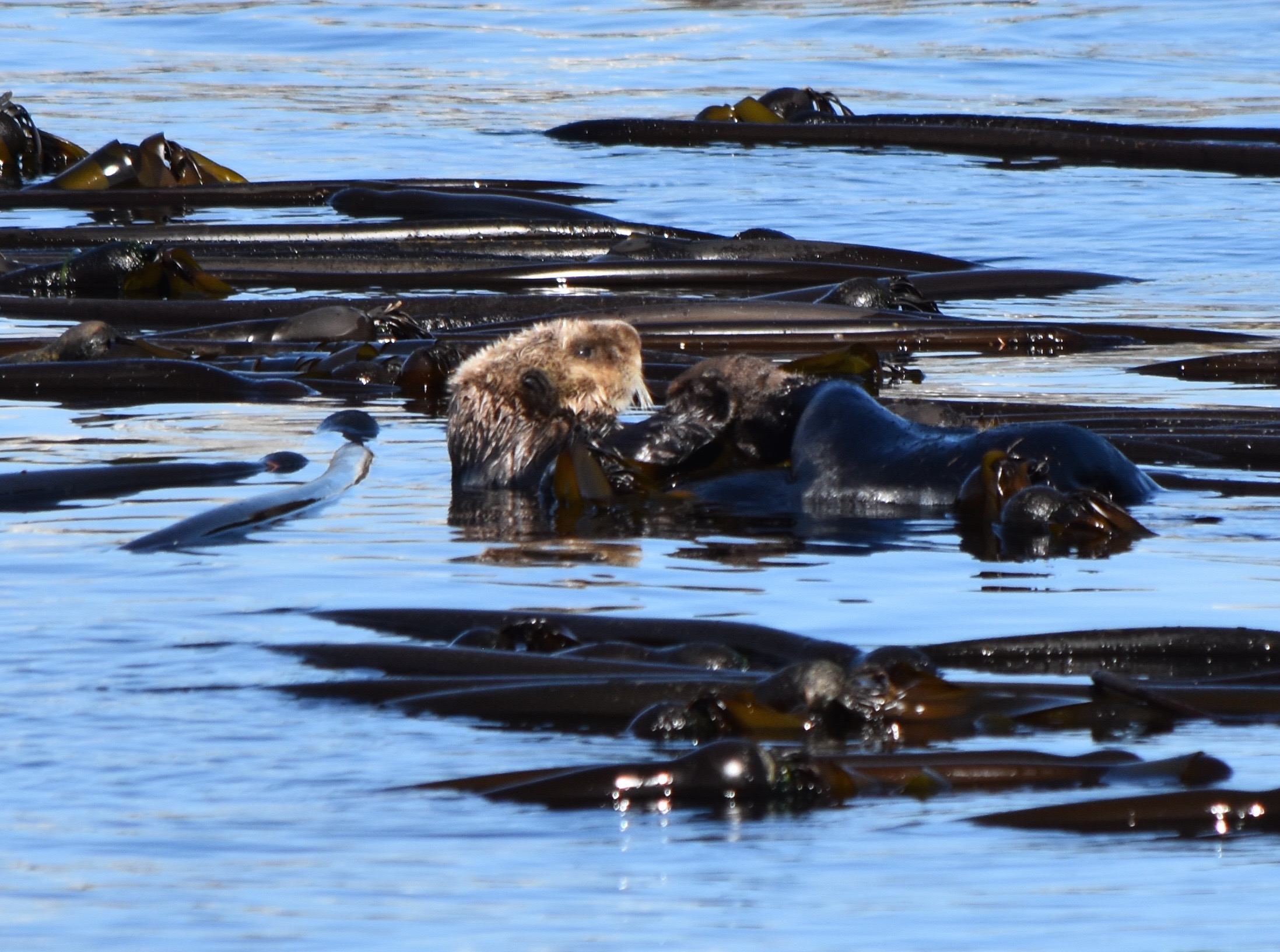Happy Sea Otter Awareness week! From September 18-24, 2016, the world recognises the very important role that sea otters play in our coastal environment. We have gathered together some interesting information about one of the cutest mammals that live in our waters.
Did you know that sea otters are a member of the weasel family and are the second smallest marine mammals? Males can reach an average length of about 4-5 feet long and females about 2-3 feet long. Like most mammals, the female tends to have a bit of a longer lifespan, 15-20 years, while the males can live for 10-15 years. On average, males weigh in at 50-100lbs and females usually range between 30-70lbs. Another interesting fact about sea otters is they don’t have blubber to protect them from the cold ocean water. While blubber may be common on most marine mammals, sea otters have the thickest coat of any animal in the animal kingdom! They rely on their thick fur to keep them warm. What gives their fur its thickness is the fact that it is comprised of two layers: long outer guard hairs, providing a protective covering and underneath this, a dense and fine underfur. If you’ve ever seen sea otters somersaulting in the water, this is done to trap air bubbles in their fur, adding extra insulation they need.
Diet
As you probably have already guessed, sea otters spend much of their lives in the water. They can dive up to 330 feet when foraging for food. They are also one of the few mammals other than primates known to use tools. They use small rocks or other objects to pry shellfish from rocks and to hammer them open. Sea otters forage for food using their dexterous front paws and highly sensitive noses. The whiskers in their nose act as fingers; they can move individually and feel out where their prey is. Sea otters are not picky when it comes to their prey. They feast on a myriad of different foods, including sea snails, mussels, crabs, clams, abalone, sea urchins, and many other animals, however, they do prefer to eat their food on the surface of the water.
Environment
As a keystone species, sea otters can also provide information into the health of a particular ecosystem. As predators, they are critical to maintaining the balance of the near-shore kelp ecosystems. Without them, the undersea animals they prey on would devour the kelp forests off the coast that provide cover and food for many other marine animals. Additionally, sea otters indirectly help to reduce levels of atmospheric carbon dioxide, a prevalent greenhouse gas, as kelp forests play an important role in capturing carbon in coastal ecosystems.
Threats
Historically, sea otters numbered between several hundred thousand to more than a million. But sadly due to the fur trade, worldwide numbers plummeted to around 1,000-2,000 in the early 1900s. Today, there are estimated to be just over 106,000 worldwide, with just over 3,000 in California. There are three subspecies of sea otters: Southern Sea Otter, Northern Sea Otter, and Russian Sea Otter. The Southern Sea Otter is found in California; the Northern in Washington, Canada, and Alaska; and the Russian is found off the eastern coast of Russia with several also reported in Japan.
Today the species is protected under the Endangered Species Act & Marine Mammal Protection Act with both the Southern and south-west stock of Northern sea otters listed as “threatened”. Unfortunately, the main threat to sea otters is the potential for oil and fuel spills. It takes only a small amount of oil in the vicinity of a sea otter to result in a breakdown of the natural oil in the fur of the animals, and a loss of almost all insulating properties. Hypothermia and death follow very shortly after exposure to oil if not treated or rescued. This threat became a scary reality following the famous Exxon Valdez spill in Alaska. This event immediately killed over 1,000 otters and removed hundreds of kilometres of habitat from their potential range. Other contributing factors are the lack of abundant food; predators, including bald eagles, killer whales, and sharks; and human-related threats including environmental contamination, conflict with commercial fisheries, and incidental takes. If you would like to learn more about this fascinating species or help in aiding their recovery, we have listed some recommended websites below. Of course, we also encourage you to research more information on your own.
Sources:
Vancouver Island Wilderness and Historical Conservation – U of Vic
Defenders.org
Sea Otter Week
Species at Risk Public Registry – Gov’t of Canada

